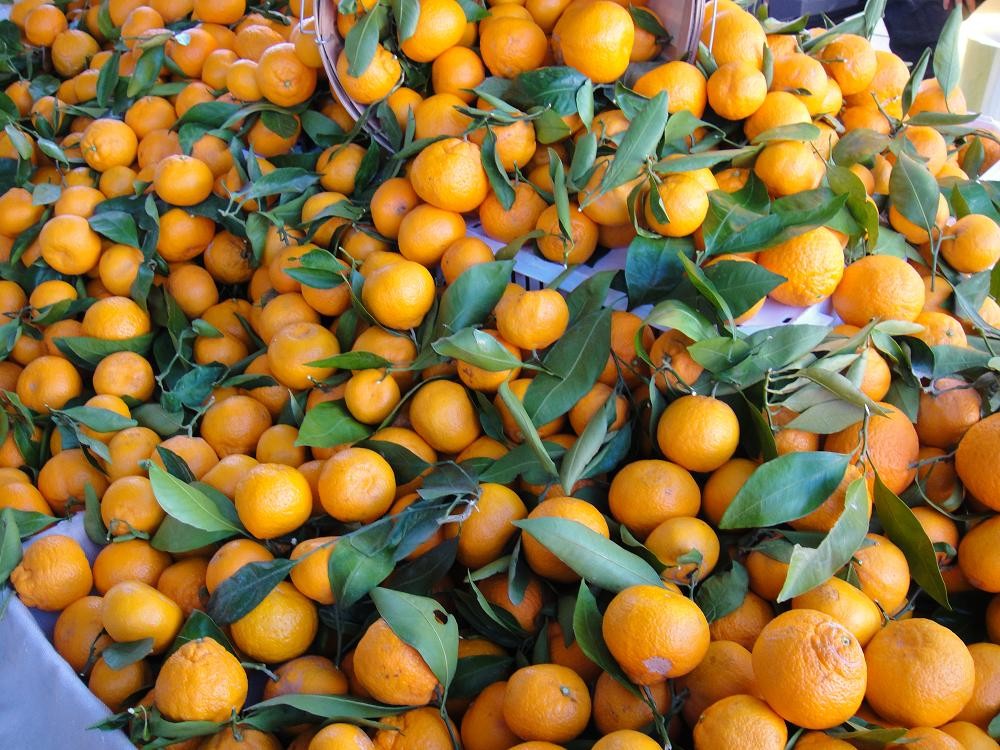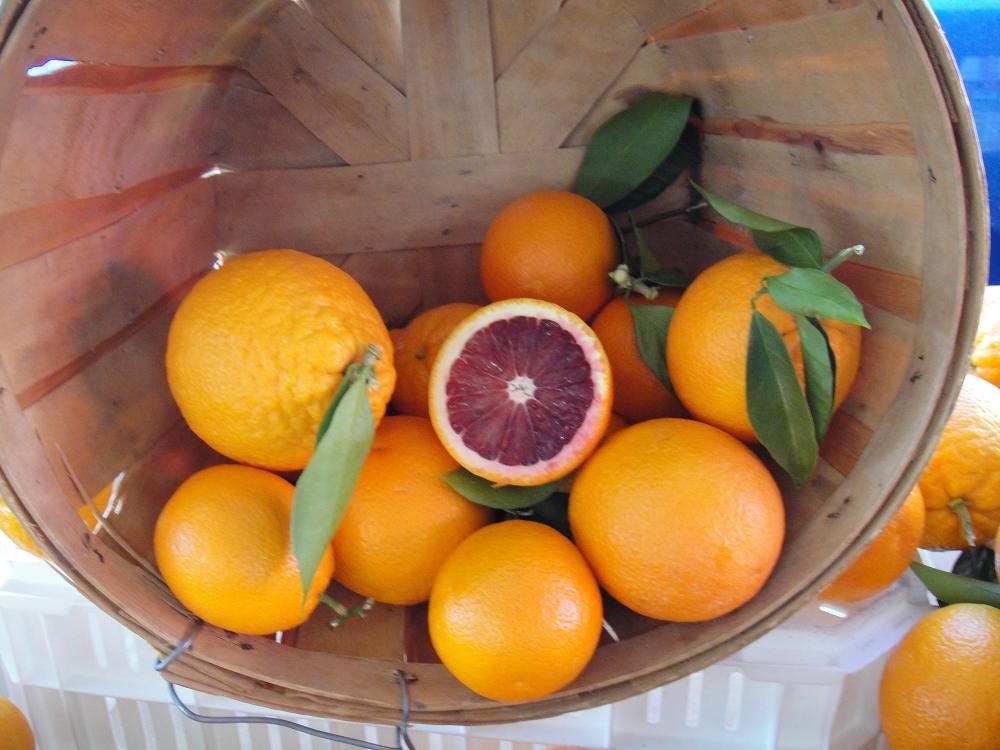
This week's national news was full of tales of woe from Florida: a long, hard freeze that is killing the legendarily-lush landscaping. The low temperatues may have wiped out the citrus crop, and more of the same is predicted for this weekend.
While this is terrible news–even around here our orange juice comes principally from Florida–our Californian citrus crop is sound and the bins at the farmer's market are overflowing with it.
]
Tangerines, which are a subset of mandarin oranges, are known for
the ease of removal of their skin (which makes them very popular in
packed lunches). The skin is all but detached from the fruit, so you
can poke your fingernail in the blossom end and just pull. Paige
tangerines are just starting to hit the market; these are the smallest,
sweetest variety of all, but if you can't find them, Murcott (or Honey)
tangerines are a very, very close second. Pick tangerines with loose skin that are heavy for their size, but if they rattle in the skin they are past their prime and have started to dry out.
Suggestions for uses
for the fruit besides eating out of hand: juice them. Tangerine juice
is one of the sweetest, least-acidic citrus juices on earth. A glass of
tangerine juice tastes like standard orange juice with honey in it;
substitute it in any drink recipe calling for orange juice. Try a salad
of oven-roasted fennel, chunks of avocado, grilled shrimp with paprika
and tangerine segments (try to remove any seeds), or serve tangerine
segments as an accompaniment to a rich, smoky feijoada.

Blood oranges are so named because the pulp and juice are dark,
purple-y red, which is an arresting sight the first few times. The
juice is sweeter than most juice oranges (though not as sweet as
clementines or tangerines) and is the juice orange of choice in much of
Spain. Don't worry about discoloration on the oranges; pick oranges
that don't have any structural breaches (cracks, moldy spots) and pick
the heaviest oranges for their size.
What to do with them?
Besides the obvious (juice, amazing mimosas), try a granita of blood
orange, use the juice as an acid in a stunningly red vinaigrette for
wilted beet greens, or whip powdered sugar into freshly-squeezed blood
orange juice for a syrup that goes well on pancakes, angel food or
thick slices of freshly-baked pound cake.

